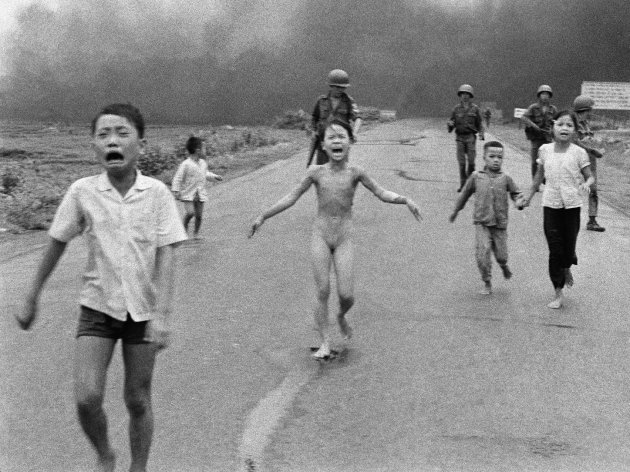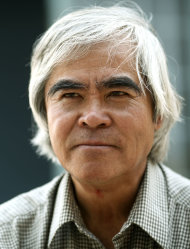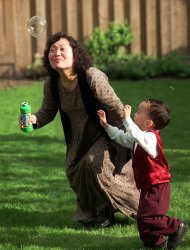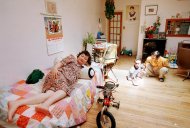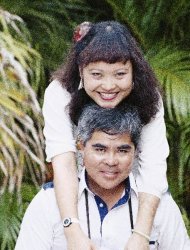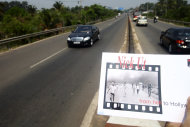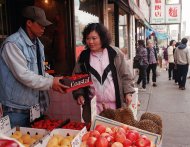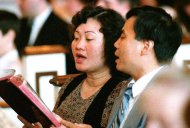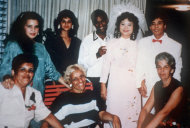
Boaventura de Sousa Santos
As sociedades contemporâneas estão gerando um combustível altamente inflamável que flui nos subsolos da vida coletiva. Trata-se de um combustível constituído pela mistura de quatro componentes: a promoção conjunta da desigualdade social e do individualismo, a mercantilização da vida individual e coletiva, a prática do racismo em nome da tolerância e o sequestro da democracia por elites privilegiadas, com a consequente transformação da política na administração do roubo “legal” dos cidadãos e do mal estar que provoca.
Os violentos distúrbios ocorridos na Inglaterra não devem ser vistos como um fenômeno isolado. Eles representam um perturbador sinal dos tempos. Sem se dar conta, as sociedades contemporâneas estão gerando um combustível altamente inflamável que flui nos subsolos da vida coletiva. Quando chegam à superfície, podem provocar um incêndio social de proporções inimagináveis.
Trata-se de um combustível constituído pela mistura de quatro componentes: a promoção conjunta da desigualdade social e do individualismo, a mercantilização da vida individual e coletiva, a prática do racismo em nome da tolerância e o sequestro da democracia por elites privilegiadas, com a consequente transformação da política na administração do roubo “legal” dos cidadãos e do mal estar que provoca.
Cada um destes componentes têm uma contradição interna: quando se superpõem, qualquer incidente pode provocar uma explosão.
- Desigualdade e individualismo. Com o neoliberalismo, o aumento brutal da desigualdade social deixou de ser um problema para passar a ser uma solução. A ostentação dos ricos e dos multimilionários transformou-se na prova do êxito de um modelo social que só deixa miséria para a imensa maioria dos cidadãos, supostamente porque estes não esforçam o suficiente para ter sucesso na vida. Isso só foi possível com a conversão do individualismo em um valor absoluto, o qual, paradoxalmente, só pode ser experimentado como uma utopia da igualdade, a possibilidade de que todos prescindam igualmente da solidariedade social, seja como seus agentes, seja como seus beneficiários. Para o indivíduo assim concebido, a desigualdade unicamente é um problema quando ela é adversa a ele e, quando isso ocorre, nunca é reconhecida como merecida.
- Mercantilização da vida. A sociedade de consumo consiste na substituição das relações entre pessoas pelas relações entre pessoas e coisas. Os objetos de consumo deixam de satisfazer necessidades para criá-las incessantemente e o investimento pessoal neles é tão intenso quando se tem como quando não se tem. Os centros comerciais são a visão espectral de uma rede de relações sociais que começa e termina nos objetos. O capital, com sua sede infinita de lucros, submeteu à lógica mercantil bens que sempre pensamos que eram demasiado comuns (como a água e o ar) ou demasiado pessoais (a intimidade e as convicções políticas) para serem comercializados no mercado. Entre acreditar que o dinheiro media tudo e acreditar que se pode fazer tudo para obtê-lo há um passo muito menor do que se pensa. Os poderosos dão esse passo todos os dias sem que nada ocorra a eles. Os despossuídos, que pensam que podem fazer o mesmo, terminam nas prisões.
- O racismo da tolerância. Os distúrbios na Inglaterra começaram com uma dimensão racial. O mesmo ocorreu em 1981 e nos distúrbios que sacudiram a França em 2005. Não é uma coincidência: são irrupções da sociabilidade colonial que continua dominando nossas sociedades, décadas depois do fim do colonialismo político. O racismo é apenas um componente, já que em todos os distúrbios mencionados participaram jovens de diversos grupos étnicos. Mas é importante, porque reúne a exclusão social com um elemento de insondável corrosão da autoestima, a inferioridade do ser agravada pela inferioridade do ter. Em nossas cidades, um jovem negro vive cotidianamente sob uma suspeita social que existe independentemente do que ele ou ela seja ou faça. E esta suspeita é muito mais virulenta quando se produz em uma sociedade distraída pelas políticas oficiais de luta contra a discriminação e pela fachada do multiculturalismo e da benevolência da tolerância.
- O sequestro da democracia. O que há em comum entre os distúrbios na Inglaterra e a destruição do bem estar dos cidadãos provocada pelas políticas de austeridade dirigidas pelas agências classificadoras e os mercados financeiros? Ambos são sinais das extremas limitações da ordem democrática. Os jovens rebeldes cometeram delitos, mas não estamos frente a uma “pura e simples” delinquência, como afirmou o primeiro ministro David Cameron. Estamos frente a uma denúncia política violenta de um modelo social e político que tem recursos para resgatar os bancos, mas não para resgatar os jovens de uma vida de espera sem esperança, do pesadelo de uma educação cada vez mais cara e irrelevante dado o aumento do desemprego, do completo abandono em comunidades que as políticas públicas antissociais transformaram em campos de treinamento da raiva, da anomia e da rebelião.
Entre o poder neoliberal instalado e os rebeldes urbanos há uma simetria perturbadora. A indiferença social, a arrogância, a distribuição injusta dos sacrifícios estão semeando o caos, a violência e o medo, e aqueles que estão realizando essa semeadura vão dizer amanhã, genuinamente ofendidos, que o que eles semearam nada tinha a ver com o caos, a violência e o medo instalados nas ruas de nossas cidades. Os que promovem a desordem estão no poder e poderiam ser imitados por aqueles que não têm poder para colocá-los em ordem.
(*) Doutor em Sociologia do Direito; professor nas universidades de Coimbra (Portugal) e Wisconsin (EUA).
(**) Traduzido por Katarina Peixoto da versão em espanhol publicada no jornal Página/12
Trata-se de um combustível constituído pela mistura de quatro componentes: a promoção conjunta da desigualdade social e do individualismo, a mercantilização da vida individual e coletiva, a prática do racismo em nome da tolerância e o sequestro da democracia por elites privilegiadas, com a consequente transformação da política na administração do roubo “legal” dos cidadãos e do mal estar que provoca.
Cada um destes componentes têm uma contradição interna: quando se superpõem, qualquer incidente pode provocar uma explosão.
- Desigualdade e individualismo. Com o neoliberalismo, o aumento brutal da desigualdade social deixou de ser um problema para passar a ser uma solução. A ostentação dos ricos e dos multimilionários transformou-se na prova do êxito de um modelo social que só deixa miséria para a imensa maioria dos cidadãos, supostamente porque estes não esforçam o suficiente para ter sucesso na vida. Isso só foi possível com a conversão do individualismo em um valor absoluto, o qual, paradoxalmente, só pode ser experimentado como uma utopia da igualdade, a possibilidade de que todos prescindam igualmente da solidariedade social, seja como seus agentes, seja como seus beneficiários. Para o indivíduo assim concebido, a desigualdade unicamente é um problema quando ela é adversa a ele e, quando isso ocorre, nunca é reconhecida como merecida.
- Mercantilização da vida. A sociedade de consumo consiste na substituição das relações entre pessoas pelas relações entre pessoas e coisas. Os objetos de consumo deixam de satisfazer necessidades para criá-las incessantemente e o investimento pessoal neles é tão intenso quando se tem como quando não se tem. Os centros comerciais são a visão espectral de uma rede de relações sociais que começa e termina nos objetos. O capital, com sua sede infinita de lucros, submeteu à lógica mercantil bens que sempre pensamos que eram demasiado comuns (como a água e o ar) ou demasiado pessoais (a intimidade e as convicções políticas) para serem comercializados no mercado. Entre acreditar que o dinheiro media tudo e acreditar que se pode fazer tudo para obtê-lo há um passo muito menor do que se pensa. Os poderosos dão esse passo todos os dias sem que nada ocorra a eles. Os despossuídos, que pensam que podem fazer o mesmo, terminam nas prisões.
- O racismo da tolerância. Os distúrbios na Inglaterra começaram com uma dimensão racial. O mesmo ocorreu em 1981 e nos distúrbios que sacudiram a França em 2005. Não é uma coincidência: são irrupções da sociabilidade colonial que continua dominando nossas sociedades, décadas depois do fim do colonialismo político. O racismo é apenas um componente, já que em todos os distúrbios mencionados participaram jovens de diversos grupos étnicos. Mas é importante, porque reúne a exclusão social com um elemento de insondável corrosão da autoestima, a inferioridade do ser agravada pela inferioridade do ter. Em nossas cidades, um jovem negro vive cotidianamente sob uma suspeita social que existe independentemente do que ele ou ela seja ou faça. E esta suspeita é muito mais virulenta quando se produz em uma sociedade distraída pelas políticas oficiais de luta contra a discriminação e pela fachada do multiculturalismo e da benevolência da tolerância.
- O sequestro da democracia. O que há em comum entre os distúrbios na Inglaterra e a destruição do bem estar dos cidadãos provocada pelas políticas de austeridade dirigidas pelas agências classificadoras e os mercados financeiros? Ambos são sinais das extremas limitações da ordem democrática. Os jovens rebeldes cometeram delitos, mas não estamos frente a uma “pura e simples” delinquência, como afirmou o primeiro ministro David Cameron. Estamos frente a uma denúncia política violenta de um modelo social e político que tem recursos para resgatar os bancos, mas não para resgatar os jovens de uma vida de espera sem esperança, do pesadelo de uma educação cada vez mais cara e irrelevante dado o aumento do desemprego, do completo abandono em comunidades que as políticas públicas antissociais transformaram em campos de treinamento da raiva, da anomia e da rebelião.
Entre o poder neoliberal instalado e os rebeldes urbanos há uma simetria perturbadora. A indiferença social, a arrogância, a distribuição injusta dos sacrifícios estão semeando o caos, a violência e o medo, e aqueles que estão realizando essa semeadura vão dizer amanhã, genuinamente ofendidos, que o que eles semearam nada tinha a ver com o caos, a violência e o medo instalados nas ruas de nossas cidades. Os que promovem a desordem estão no poder e poderiam ser imitados por aqueles que não têm poder para colocá-los em ordem.
(*) Doutor em Sociologia do Direito; professor nas universidades de Coimbra (Portugal) e Wisconsin (EUA).
(**) Traduzido por Katarina Peixoto da versão em espanhol publicada no jornal Página/12
http://www.cartamaior.com.br/templates/materiaMostrar.cfm?materia_id=18278


